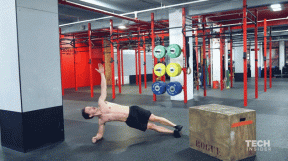Autodesk Inventor 2021.Level 2. Advanced features - course RUB 22,990. from Specialist, training 16 academic hours, date of May 21, 2023.
Miscellaneous / / December 05, 2023
Practical teacher for CAD courses. Holder of ten prestigious international certifications from Autodesk and SolidWorks (Dassault Systemes), certified CSWP specialist. Proficient in AutoCAD, MathCad, SolidWorks, Inventor and other CAD systems.
Graduated from the Faculty of Robotics and Integrated Automation at Moscow State Technical University named after N.E. Bauman. He has extensive experience in the professional use of CAD in engineering developments. In particular, he was involved in the development of the main components of hoisting and transport machines (HTM), performing calculations of the mechanisms and metal structures of the HTM, and performing various design documentation.
Since 2006, he has been engaged in the professional development of design and working documentation for operator base stations cellular communications in accordance with current building codes and regulations (SNiP), general construction standards (OSTN), and etc. During these works, Alexander Alexandrovich was involved in the development and coordination of technical specifications, coordination of the project with the customer, state examination, verification of design and working documentation, conducting surveys for the placement of base stations, supervised and coordinated the work of contractors, and also carried out the delivery of projects to customers. The professional experience accumulated during the implementation of these works allowed Alexander Alexandrovich to become the head of the design team and the chief engineer of the project.
Participant of many specialized conferences and master classes. Among the latest are Autodesk University Russia 2017, Autodesk University Russia 2018, Solidworks Forum Russia 2018.
When conducting classes, she pays special attention to acquiring and consolidating practical work skills. He generously shares his own professional experience and answers questions in detail from listeners. Pays attention to each student, rigorously checks the assimilation of educational material, ensuring that students obtain knowledge and skills in the full scope of the curriculum.
Module 1. Working with imported geometry (2 ac. h.)
- Import geometry as reference model. Import settings and operating features.
- Import geometry as model transformation. Import settings and operating features.
- DWG import. Use as an associative substrate.
- Making changes to imported geometry.
Module 2. Parametric modeling (2 ac. h.)
- Equations and parameters.
- Using equations in the part environment.
- Using equations in the assembly environment.
- Using Microsoft Excel to work with parameters.
- Sharing parameters.
- Creation of parametric series of parts – iPart.
- Creation of parametric series of assemblies - iAssembly.
- Placement of parametric series in assemblies. Creating configurations.
Module 3. Multibody modeling (2 ac. h.)
- The concept of multi-part
- Procedure for creating a multi-part
- Moving bodies
- Combining bodies
- Plastic elements
- Creation of derived parts and assemblies
Module 4. Adaptive modeling (1 ac. h.)
- Basic concepts
- Create adaptive parts from reference geometry
- Assigning adaptability properties to elements with geometric constraints
- Adaptive builds
Module 5. Advanced work with assemblies (5 ac. h.)
- Top-Down Modeling.
- Creating and editing parts in the context of an assembly.
- Creation of virtual components.
- Creation of subassemblies. Inserting a subassembly into a top-level assembly.
- Changing the component level.
- Adjustment of assembly mobility.
- Gear connection, shaft generator, spring design.
- The concept of the underlying basis. Creation and work with the underlying basis. Creation of parts based on the underlying basis.
- Tools Design.
Module 6. Design of parts of complex spatial shapes, tools for analysis and diagnostics of geometry (4 ac. h.)
- Three-dimensional sketch.
- Spline modeling.
- Shift element. Border conditions. Tool settings.
- Element Loft. Border conditions. Tool settings.
- The concept of continuity. Smoothness Analysis (Zebra), Curvature Analysis, Cross Section Analysis. Analysis management.
At the end of the master class, you will understand how to make realistic and expressive hands. The model consists of simple shapes and elements. After completing the master class, you will have an understanding of these structures, which will enable...
3,8
In this course, we show you in detail all the stages of creating an animated work “Your cartoon from 0”. In fact, you are creating the same cartoon, where you will be the main character! Having mastered this experience in practice, in the future you will be able to independently create your own cartoons and animations, relying on this knowledge base that we share with you.
2,8



